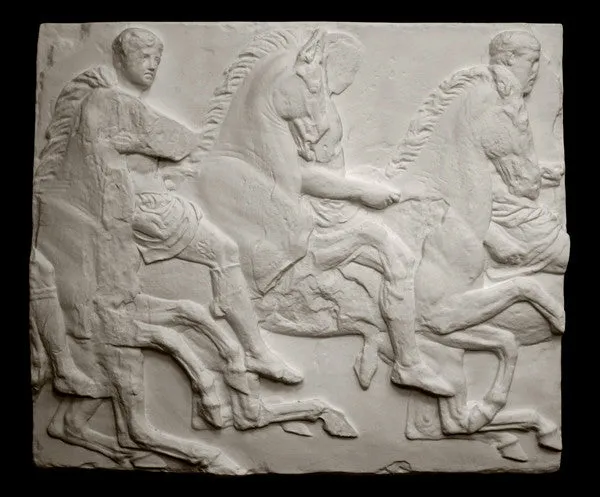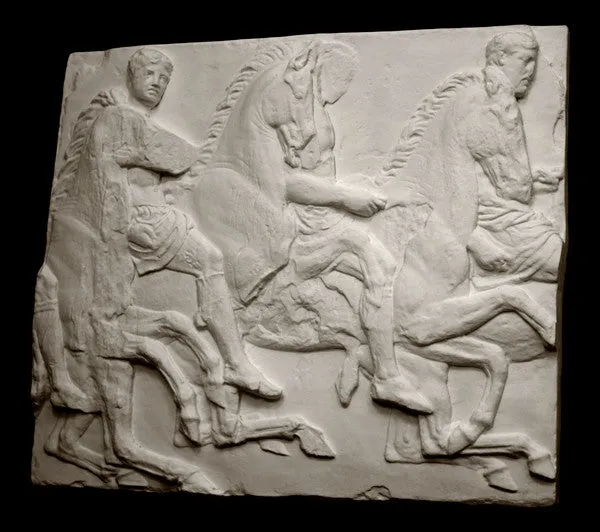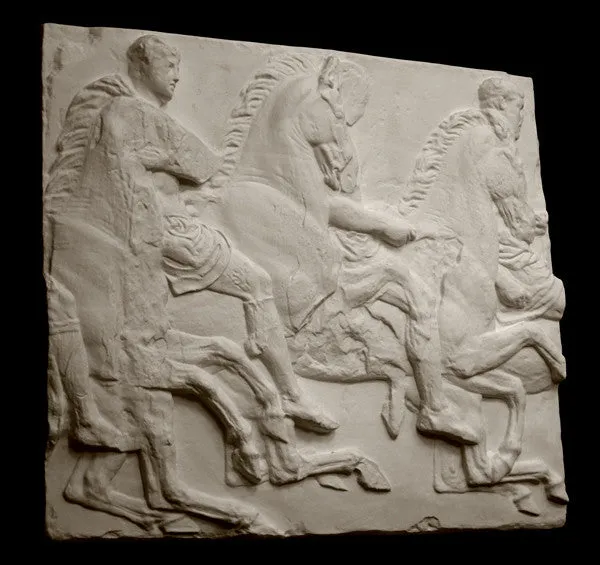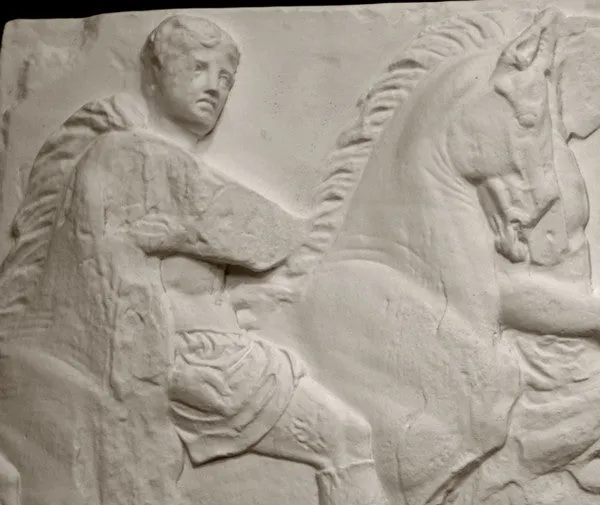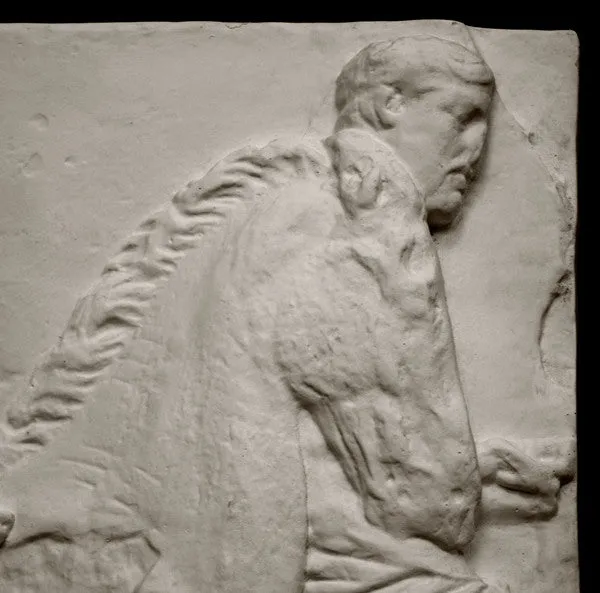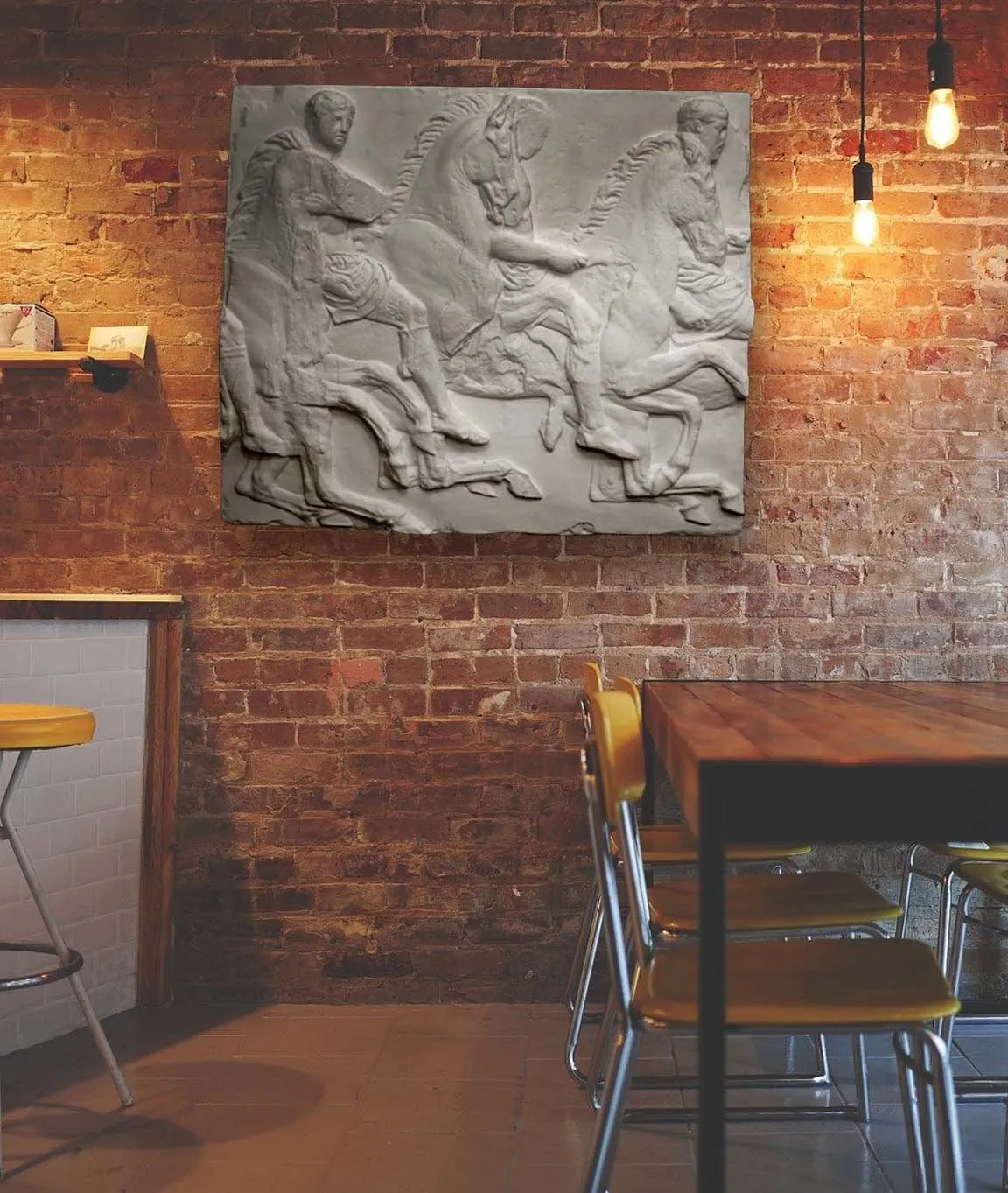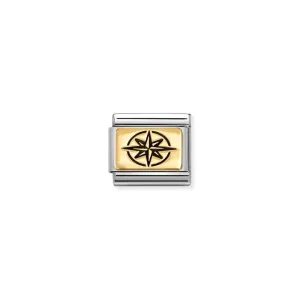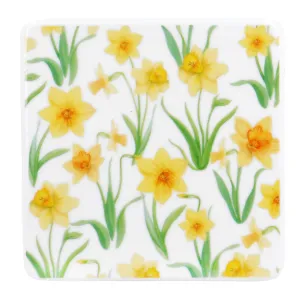42 Inches High x 48 Inches Wide
The Parthenon, a temple dedicated to the goddess Athena, is an astounding example of Classical Greek architecture and art. It was built by the architects Ictinus and Callicrates while the supervisor, and also the artistic director, for the project was the sculptor Phidias. Situated on the Acropolis in Athens, the Parthenon, at its prime, was a temple of white marble with countless colorful sculptures. Today, it is partially in ruins. The frieze that surrounded the cella, or the interior structure, still exists, but is divided among many museums around the world. The Acropolis Museum and the British Museum hold the majority of the 115 blocks, which formed the 160 meter- (or 525 foot-) long frieze. The narrative is about the procession that took place on the final day of the festival that honored Athena, the Great Panathenaia.
The Southern frieze as a whole depicts ten groups of six horsemen, divided so because of the different styles of dress each group wears. This imagery may define the tribes of which the Athenian cavalry was composed. In this slab, three horsemen are shown, mostly obscured by the heads of the horses. It is in the British Museum, but the head of the man in the center is in the Acropolis Museum.
Artist: Unknown
Museum: British Museum, London, and Acropolis Museum, Athens
Origin: The Parthenon - Southern Frieze, Athens
Time Period: Ancient Greek, 447-432 B.C.E.
1911 Catalog ID # - 7001 Slab XI
Sources:
Choremi, A. “The Parthenon Frieze. Block S XI.” The Parthenon Frieze. English translation by M. Caskey. Ministry of Culture – Acropolis Restoration Service – First Ephorate of Prehistoric and Classical Antiquities – Department of Information and Education, and National Documentation Centre – National Hellenic Research Foundation, 2009, .
Choremi, A. “South Frieze.” The Parthenon Frieze. English translation by M. Caskey. Ministry of Culture – Acropolis Restoration Service – First Ephorate of Prehistoric and Classical Antiquities – Department of Information and Education, and National Documentation Centre – National Hellenic Research Foundation, 2009, .
“The Frieze.” Acropolis Museum, .
Hadziaslani, C. and I. Kaimara. “About Parthenon.” The Parthenon Frieze. English translation by M. Caskey. Ministry of Culture – Acropolis Restoration Service – First Ephorate of Prehistoric and Classical Antiquities – Department of Information and Education, and National Documentation Centre – National Hellenic Research Foundation, 2009, .
“Parthenon.” Wikipedia, h.
“The Parthenon Sculptures.” Museum number 1816,0610.62. The British Museum, .
“The Parthenon Sculptures.” Museum number 1816,0610.71. The British Museum, .




